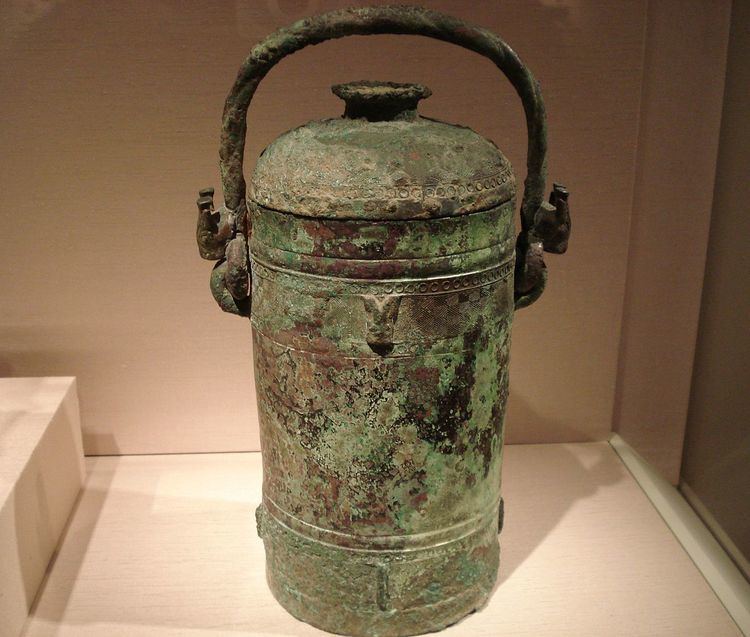 | ||
Chinese archaeology has been practiced since the Song Dynasty with early practices of antiquarianism.
History
During the Song Dynasty (960–1279), the Chinese gentry's antiquarian pursuits of art collecting, scholar-officials retrieved ancient relics from archaeological sites in order to revive the use of ancient vessels in ceremonies of state ritual. Scholar-officials claimed to have discovered ancient bronze vessels that were created as far back as the Shang dynasty (1600–1046 BCE), which bore the written characters of the Shang era. Some attempted to recreate these bronze vessels by using imagination alone, not by observing tangible evidence of relics, a practice criticized by Shen Kuo in his Dream Pool Essays published in 1088. He also objected to the idea of his peers that ancient relics were created by famous "sages" in lore or the ancient aristocratic class, rightfully observing the discovered handicrafts and ancient vessels as the work of artisans and commoners from previous eras. Shen also disapproved of his peers' pursuit of archaeology simply to enhance state ritual, since he not only took an interdisciplinary approach with the study of archaeology, but he also emphasized the study of functionality and investigating what was the ancient relics' original processes of manufacture. Shen used ancient texts and existing models of armillary spheres to create one based on ancient standards and experimented with ancient musical measures, making the suggestion to hang an ancient bell by a hollow handle.
The scholar Ouyang Xiu (1007–1072) analyzed alleged ancient artifacts bearing archaic inscriptions in bronze and stone, which he preserved in a collection of some 400 rubbings; Patricia Ebrey writes that he pioneered early ideas in epigraphy.
The Kaogutu (考古圖) or "Illustrated Catalogue of Examined Antiquity" (preface dated 1092) compiled by Lü Dalin (呂大臨) (1046–1092) is one of the oldest known catalogues to systematically describe and classify ancient artifacts which were unearthed. Another catalogue was the Chong xiu Xuanhe bogutu (重修宣和博古圖) or "Revised Illustrated Catalogue of Xuanhe Profoundly Learned Antiquity" (compiled from 1111 to 1125), commissioned by Emperor Huizong of Song (r. 1100 – 1125), and also featured illustrations of some 840 vessels and rubbings. This catalogue was criticized by Hong Mai (洪迈) (1123–1202), who found that descriptions of certain ancient vessels dating to the Han Dynasty were incorrect when he compared them to actual Han Dynasty specimens he obtained for study.
Song scholars established a formal system of dating these artifacts by examining their inscriptions, decorative motif styles, and physical shapes. Zhao Mingcheng (1081–1129) stressed the importance of utilizing ancient inscriptions to correct discrepancies and errors in later texts discussing ancient events, such as with dates, geographical locations of historical events, genealogies, and official titles.
Bruce G. Trigger writes that interests in antiquarian studies of ancient inscriptions and artifacts waned after the Song Dynasty, but were revived by early Qing Dynasty (1644–1912) scholars such as Gu Yanwu (1613–1682) and Yan Ruoju (1636–1704). Craig Clunas also states that epigraphic studies weren't revived until the Qing Dynasty, but that printed copies of the Chong xiu Xuanhe bogutu were widely circulated in the 16th century during the Ming Dynasty (1368–1644). Trigger asserts that archaeology as a discipline of its own never developed in China and was always considered a branch of historiography instead.
